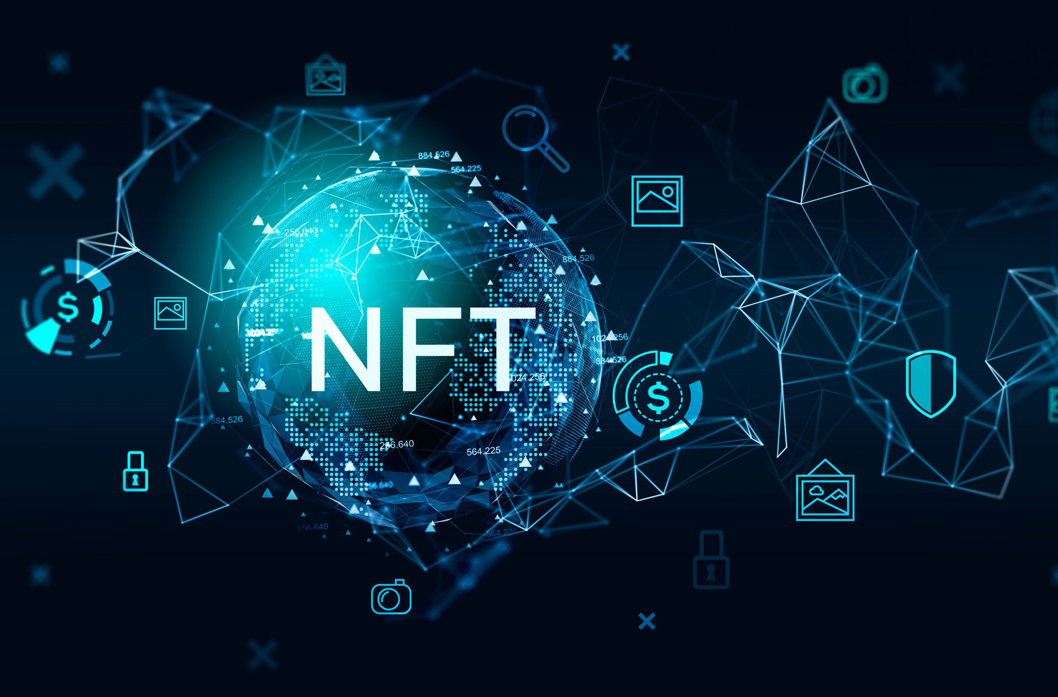The rise of Non-Fungible Tokens (NFTs) has revolutionized the digital space, creating new opportunities for creators, investors, and developers. Building a full-stack NFT dApp (Decentralized Application) is an exciting project that can unlock numerous possibilities in digital art, gaming, real estate, and more. This guide will walk you through the key steps required to create a full-stack NFT dApp, from concept to deployment.
Steps to create a full-stack NFT dApp
Step 1: Understand the Basics of NFTs and Blockchain
Before diving into development, it's crucial to understand what NFTs and blockchain are:
- NFTs: Non-Fungible Tokens are unique, indivisible digital assets stored on a blockchain. Unlike cryptocurrencies such as Bitcoin or Ethereum, NFTs cannot be exchanged one-for-one due to their uniqueness.
- Blockchain: This decentralized ledger technology underpins NFTs. Ethereum is the most popular blockchain for NFTs due to its robust smart contract capabilities.
To build an NFT dApp, you should familiarize yourself with Ethereum standards, especially ERC-721 (the most common NFT standard) and ERC-1155 (used for creating fungible and non-fungible tokens).
Step 2: Plan the Architecture of Your NFT dApp
A full-stack NFT dApp consists of three primary components:
- Frontend: The user interface that enables users to interact with your dApp.
- Backend: The server-side logic for handling operations such as metadata storage, user authentication, and integration with the blockchain.
- Smart Contracts: These blockchain-based programs handle the creation, ownership, and transfer of NFTs.
Example architecture:
- Frontend: React.js or Next.js for UI development.
- Backend: Node.js and Express for server-side programming.
- Blockchain: Ethereum blockchain using Solidity for smart contracts.
- Storage: IPFS (InterPlanetary File System) for decentralized storage of metadata.
Step 3: Set Up Your Development Environment
- Install Node.js: Necessary for building the frontend and backend.
- Install Truffle or Hardhat: These tools help in compiling, deploying, and testing smart contracts.
- Set Up MetaMask: A browser wallet for interacting with the Ethereum blockchain during development.
- Choose a Code Editor: Visual Studio Code (VS Code) is a popular choice.
Step 4: Develop the Smart Contract
Smart contracts form the backbone of your NFT dApp. Use Solidity, Ethereum's programming language, to write your contracts.
Here’s an example of a simple ERC-721 smart contract:
solidity
Copy code
pragma solidity ^0.8.0;
import "@openzeppelin/contracts/token/ERC721/ERC721.sol";
contract MyNFT is ERC721 {
uint256 public nextTokenId;
address public admin;
constructor() ERC721("MyNFT", "MNFT") {
admin = msg.sender;
}
function mint(address to) external {
require(msg.sender == admin, "Only admin can mint");
_safeMint(to, nextTokenId);
nextTokenId++;
}
}
Key Steps:
- Install OpenZeppelin contracts to leverage their secure and modular token templates.
- Test your smart contract locally using tools like Hardhat or Truffle.
Step 5: Deploy the Smart Contract
Deploy your contract to a testnet (such as Rinkeby or Goerli) before going live. Use tools like Remix, Truffle, or Hardhat for deployment.
Example Hardhat deployment script:
javascript
Copy code
const hre = require("hardhat");
async function main() {
const MyNFT = await hre.ethers.getContractFactory("MyNFT");
const myNFT = await MyNFT.deploy();
await myNFT.deployed();
console.log("MyNFT deployed to:", myNFT.address);
}
main().catch((error) => {
console.error(error);
process.exitCode = 1;
});
Run this script to deploy your contract to the blockchain.
Step 6: Build the Frontend
Use React.js or Next.js to develop a user-friendly interface for your NFT dApp. The frontend connects users to the blockchain via Web3.js or ethers.js.
Key Features:
- Wallet connection (using MetaMask).
- NFT minting interface.
- Display of owned NFTs.
Sample code for connecting MetaMask:
javascript
Copy code
import { ethers } from "ethers";
async function connectWallet() {
if (window.ethereum) {
try {
const provider = new ethers.providers.Web3Provider(window.ethereum);
await provider.send("eth_requestAccounts", []);
const signer = provider.getSigner();
console.log("Wallet connected:", await signer.getAddress());
} catch (error) {
console.error("Connection failed:", error);
}
} else {
alert("MetaMask is not installed!");
}
}
Step 7: Integrate the Backend
Use Node.js and Express.js to manage backend operations. This could include:
- Storing and retrieving metadata for NFTs.
- Handling user data securely.
For metadata, you can use IPFS to store image files and JSON metadata. Pinata is a popular service for managing IPFS uploads.
Step 8: Test Your dApp
Testing ensures your dApp functions as intended. Use the following tools:
- Ganache: A local Ethereum blockchain for testing.
- Mocha & Chai: For unit testing your smart contracts.
- Cypress or Jest: For testing the frontend.
Step 9: Deploy to the Mainnet
Once your dApp is tested and refined, deploy it to the Ethereum mainnet. Ensure your contract and frontend are optimized to handle real-world traffic and fees.
Steps:
- Transfer your smart contract to the mainnet.
- Host the frontend on platforms like Netlify or Vercel.
Step 10: Maintain and Improve Your dApp
After deployment, monitor your dApp’s performance and user feedback. Regular updates to fix bugs, enhance features, and optimize performance are critical for success.
Final Thoughts
Building a full-stack NFT dApp is a rewarding endeavor that combines blockchain expertise with web development skills. By following this guide, you can create a robust, scalable NFT platform that caters to the growing Web3 ecosystem.
At BloxBytes, we specialize in blockchain development and can assist you in bringing your NFT dApp ideas to life. From conceptualization to deployment, our team provides end-to-end solutions tailored to your project’s needs. Let’s build the future of NFTs together!





Comments